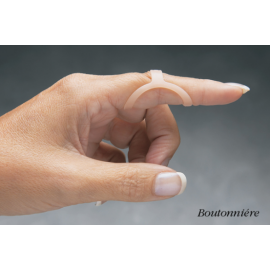What is the Conservative Management for Trigger Finger?
Introduction
Trigger finger, also known as stenosing tenosynovitis, is a common condition that affects the tendons in the fingers and thumb. It is characterized by a finger or thumb getting stuck in a bent position and then suddenly snapping straight when trying to extend it. This is due to the inflammation and thickening of the affected tendon, which makes it difficult for the tendon to glide smoothly through its protective sheath. Although trigger finger can be painful and limit hand function, conservative management options are available for those seeking non-surgical treatment. In this article, we will explore the conservative management strategies for trigger finger and how they can help alleviate symptoms and improve hand function.
Rest and Activity Modification
One of the initial conservative management steps for treating trigger finger is to rest the affected finger and avoid activities that may aggravate the condition. This includes avoiding repetitive gripping, pinching, or lifting heavy objects. By giving the finger time to rest and heal, inflammation and pain may decrease.
Splinting
Splinting is a common conservative treatment for trigger finger. A splint can be worn on the affected finger to help keep it in an extended position, preventing the triggering motion. The splint should be worn during the night and, if necessary, during the day for several weeks. This immobilization helps reduce inflammation and allows the tendon to heal.
Nonsteroidal Anti-inflammatory Drugs (NSAIDs)
To help alleviate pain and inflammation associated with trigger finger, over-the-counter nonsteroidal anti-inflammatory drugs (NSAIDs) such as ibuprofen or naproxen may be recommended. These medications can provide temporary relief, but it is important to follow the recommended dosage and consult a healthcare professional if symptoms persist.
Ice and Heat Therapy
Applying ice packs to the affected area can help reduce inflammation and alleviate pain. Ice should be applied for 15 to 20 minutes at a time, several times a day. Heat therapy, such as warm soaks or heating pads, can also be beneficial for improving blood flow and relaxing the tendon. It is essential to avoid direct contact between the ice or heat source and the skin to prevent burns or frostbite.
Stretching and Strengthening Exercises
Specific hand and finger exercises can help improve the flexibility and strength of the affected finger. A healthcare professional or physical therapist can recommend appropriate exercises tailored to your condition. These exercises should be performed under their guidance to ensure proper technique and avoid further injury.
Corticosteroid Injections
In cases where conservative treatments have not provided sufficient relief, a healthcare professional may recommend a corticosteroid injection. This involves injecting a steroid medication directly into the tendon sheath to reduce inflammation and improve finger mobility. While corticosteroid injections can provide temporary relief, they may not be a long-term solution and should be used with caution, as repeated injections can weaken the tendon.
Conclusion
Conservative management for trigger finger focuses on alleviating symptoms and promoting healing without resorting to surgery. Rest, splinting, NSAIDs, ice and heat therapy, stretching and strengthening exercises, and corticosteroid injections are all potential conservative treatment options. It is essential to work with a healthcare professional to develop an appropriate treatment plan tailored to your specific condition. If conservative treatments fail to provide adequate relief, surgical intervention may be considered.




Leave your comment
Note: HTML is not translated!